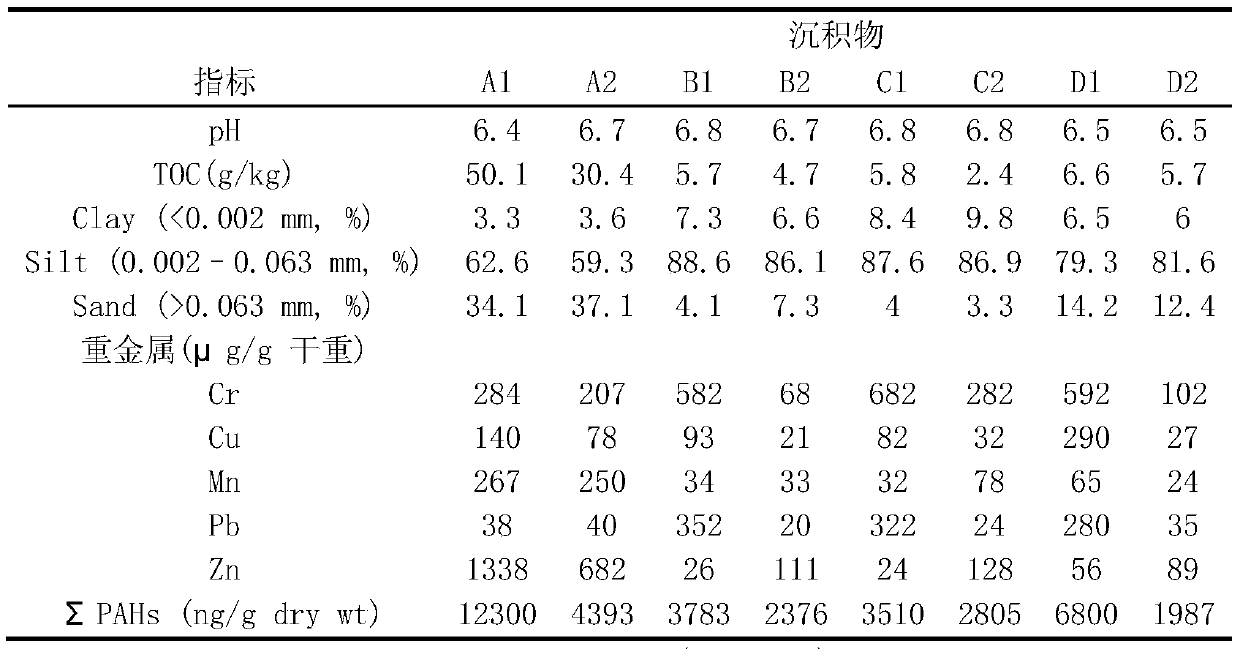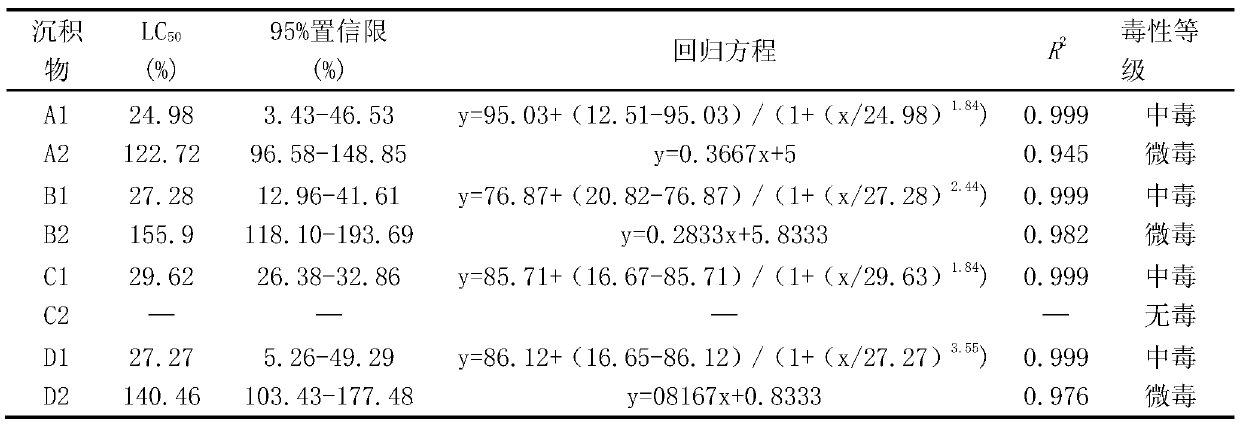Method for evaluating toxicity of total sediments by utilizing daphnia magna
An evaluation method and sediment technology, which can be used in biological testing, material inspection products, measuring devices, etc., can solve the problems of reducing the toxic concentration of elutriation water, underestimating the actual risk of polluted sediments, etc., and achieve good holding capacity and mild preparation process. Effect
- Summary
- Abstract
- Description
- Claims
- Application Information
AI Technical Summary
Problems solved by technology
Method used
Image
Examples
Embodiment 1
[0028] A method for evaluating the toxicity of whole sediments utilizing Daphnia magna, comprising the following steps:
[0029] 1. Freeze-dry the sediment of the river channel with a freeze dryer, sieve it, and obtain a sediment sample;
[0030] 2. Weigh 5g sediment sample, add 50mL calcium chloride (1%, m / v) solution, shake at 150rpm for 4h, and centrifuge at 7000rpm to remove the supernatant, then use deionized water to wash three times to remove soluble Then add 30mL acetone and 30mL dichloromethane respectively, ultrasonically extract for 10min three times, centrifuge at 7000rpm, and then use deionized water to wash three times to remove organic pollutants and remaining organic solvents. Dry in a fume hood to obtain blank deposits in situ;
[0031] 3. Mix the sediment sample and the in-situ blank sediment to obtain a group of mixed samples with a total dry weight of 0.5 g and different ratios of sediment samples, wherein the mass ratios of the sediment samples in each gr...
Embodiment 2
[0038] A method for evaluating the toxicity of whole sediments utilizing Daphnia magna, comprising the following steps:
[0039] 1. Take the soil and use a freeze dryer to freeze-dry it and sieve it to obtain a sediment sample;
[0040] 2. Weigh 10g sediment sample, add 50mL calcium chloride (2%, m / v) solution, shake at 300rpm for 8h, and centrifuge at 12000rpm to remove the supernatant, then use deionized water to wash three times to remove soluble state of heavy metals and remaining calcium chloride. Then add 30mL of acetone and 30mL of dichloromethane, ultrasonically extract three times for 30min, centrifuge at 12000rpm, then use deionized water, wash three times to remove organic pollutants and remaining organic solvents, and dry in a fume hood to obtain in-situ blank deposits;
[0041] 3. Mix the sediment sample and the in-situ blank sediment sample to obtain a group of mixed samples with a total dry weight of 1.5 g and different ratios of sediment samples, wherein the rat...
Embodiment 3
[0048] A method for evaluating the toxicity of whole sediments utilizing Daphnia magna, comprising the following steps:
[0049] 1. Take the sediment of the river course and use a freeze dryer to freeze-dry and sieve to obtain a sediment sample;
[0050] 2. Weigh 5g sediment sample, add 50mL calcium chloride (1%, m / v) solution, shake at 150rpm for 4h, and centrifuge at 7000rpm to remove the supernatant, then use deionized water to wash three times to remove soluble Then add 30mL acetone and 30mL dichloromethane respectively, ultrasonically extract for 10min three times, centrifuge at 7000rpm, and then use deionized water to wash three times to remove organic pollutants and remaining organic solvents. Dry in a fume hood to obtain blank deposits in situ;
[0051] 3. Mix the sediment sample and the corresponding in-situ blank sediment sample to obtain a group of mixed samples with a total dry weight of 1 g and different ratios of sediment samples, wherein the ratios of sediment ...
PUM
| Property | Measurement | Unit |
|---|---|---|
| hardness | aaaaa | aaaaa |
| dissolved oxygen | aaaaa | aaaaa |
| pore size | aaaaa | aaaaa |
Abstract
Description
Claims
Application Information
 Login to View More
Login to View More - R&D
- Intellectual Property
- Life Sciences
- Materials
- Tech Scout
- Unparalleled Data Quality
- Higher Quality Content
- 60% Fewer Hallucinations
Browse by: Latest US Patents, China's latest patents, Technical Efficacy Thesaurus, Application Domain, Technology Topic, Popular Technical Reports.
© 2025 PatSnap. All rights reserved.Legal|Privacy policy|Modern Slavery Act Transparency Statement|Sitemap|About US| Contact US: help@patsnap.com



